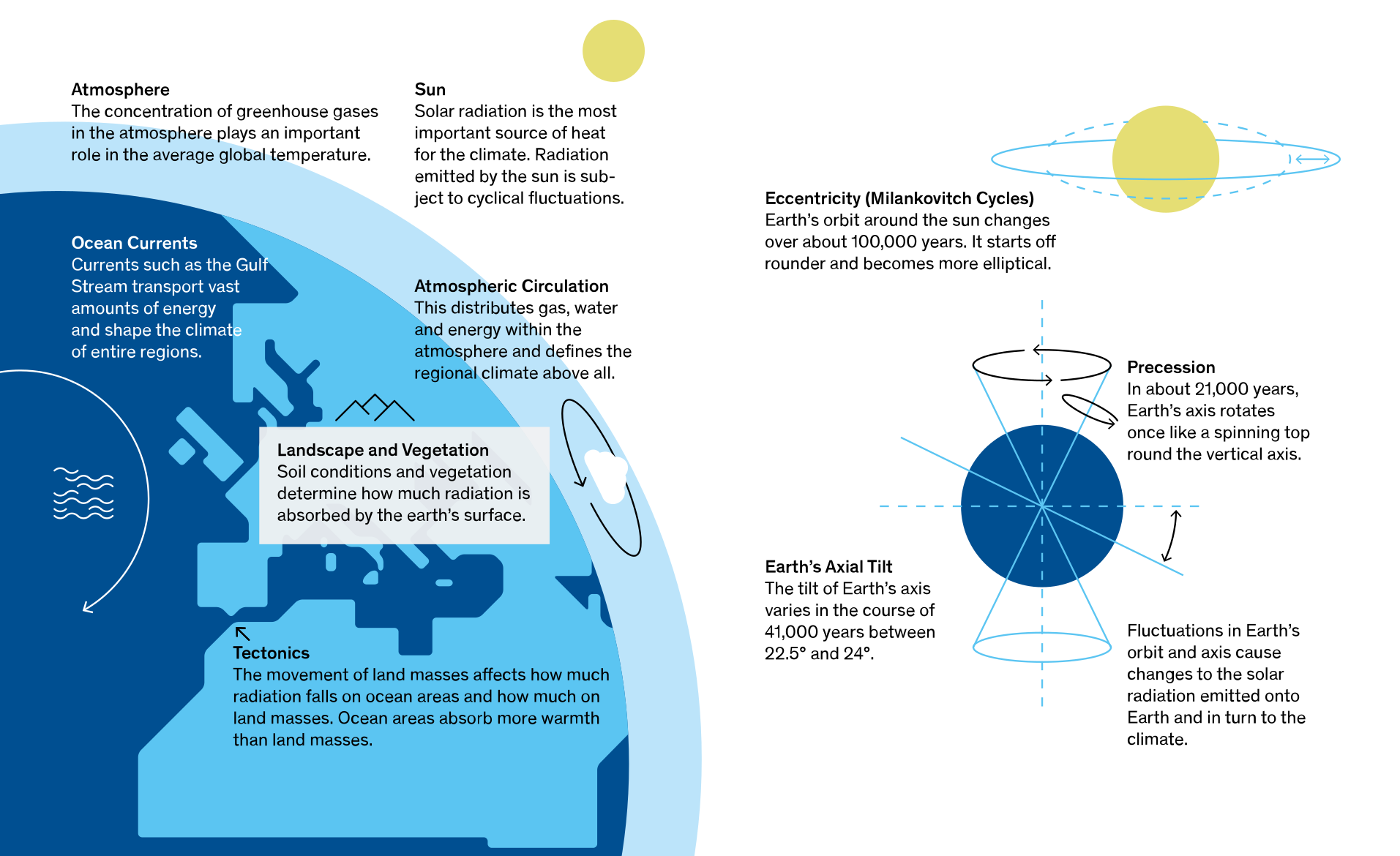Last modification
What is the greenhouse effect?
What is the greenhouse effect?
Allow us to explain this phenomenon systemically: the Earth’s surface is warmed by solar radiation. The earth's surface reflects the radiation as long-wave heat radiation, which is partially absorbed by the atmospheric greenhouse gases. By subsequently emitting the absorbed energy, part of the radiation is reflected back to the earth and the earth's surface and lower atmospheric layers are heated. This process is referred to as the greenhouse effect.

How physical climate factors influence the climate on our planet
How does it all look from a closer view? The prevailing climate on our planet is determined by various physical climate factors and drivers: besides the concentration of greenhouse gases in the atmosphere, these include ocean currents, solar radiation, tectonic shifts or changes in the Earth's orbit. The Earth's climate is the result of all these influences. A change in one or more of these factors therefore also leads to a change in the climate. Individual influencing factors, for example volcanic eruptions, only have a short-term effect lasting a few years. Fluctuations in the Earth's orbit, on the other hand, change the climate very slowly over hundreds of thousands of years.
The atmosphere and its composition play a central role in the prevailing climate. This gas envelope is what makes life on Earth possible in the first place as it protects us from some harmful external influences such as UV radiation. The weather takes place in its lowest layer, the "troposphere". Winds also ensure the exchange of heat between cold and warm regions there. Besides the main components oxygen and nitrogen, the atmosphere also contains the greenhouse gases water vapour (H2O), carbon dioxide (CO2), methane (CH4) and nitrous oxide (N2O). These gases have the physical property of absorbing and emitting long-wave thermal radiation emitted from the earth's surface. Part of this radiation is sent back to the earth's surface and causes a higher temperature by reducing the cooling effect of heat radiation.
The natural greenhouse effect makes life on earth possible, as it has developed to this day. Based on the natural presence of greenhouse gases, water vapour and carbon dioxide, there is a temperature difference of 33°C according to the current state of research. This means that without greenhouse gases, the average temperature on Earth would be around -18°C and the earth and life on it would never have developed as we know it today. The emission of greenhouse gases by humans amplifies this natural effect.

The man-made greenhouse gas effect
The natural balance between irradiation and radiation is disturbed by the greenhouse gases caused by humans. Since the beginning of industrialisation, emissions of greenhouse gases such as carbon dioxide (CO2), methane and nitrous oxide have risen dramatically. Today, 40 percent more CO2 exists in the atmosphere than at the beginning of the industrial age. This means the temperature of the earth's surface has increased globally by more than 1°C since the beginning of the 20th century. One speaks of the man-made or "anthropogenic greenhouse effect".
Sources:
Federal office for the Environment (FOEN)
German Environment Agency (UBA)
IPCC 2021
You can find further exciting information on the subject of climate change and climate protection in our climate booklet
